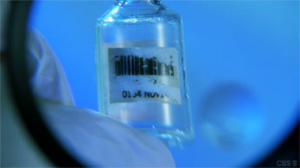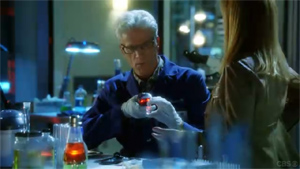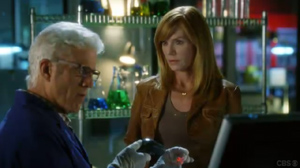Wasp Barcode Technologies: The Barcode Solution People
Freaks & Breeks© on CSI
Barcode technology keeps making cameo appearances in popular TV shows and movies, which is rather thrilling to us breeks© (barcode geeks). Last week on the
CSI episode “Freaks & Geeks”, a barcode was the critical piece of evidence for identifying a killer.
The crime centered on a travelling freak show, hence the episode’s name. One of the victims had been given a lethal dose of propofol, the same drug responsible for Michael Jackson’s death. The CSI’s were having a hard time finding the source of the propofol, until one of the “freaks” coughed up the evidence…literally. Apparently some freaks think that the stomach is the safest place to hide small things, like a glass vial.

After swimming around in gastric juices for a couple of days, the vial’s label was a bit the worse for wear, obviously. The barcode was heavily damaged. Seeing that, one might become disheartened. Don’t worry; this won’t roll into a Cold Case (that show was cancelled last year).

Our heroes didn’t even bat an eye. They relied on their trusty barcode scanner. We don’t get a real good shot of the barcode scanner, but the little bit we do see of it looks like a
Datalogic QuickScan Imager.

For reading a damaged barcode, linear imager barcode scanners are the best choice. The
Honeywell Hyperion 1300g is a really aggressive linear imager. When Honeywell trained our sales team on it, I saw it easily read a barcode that had been completely blacked out by a ball point pen. The
Motorola DS3508 is also an excellent barcode scanner. It can read 2D barcodes as well as linear barcodes, so if the propofol manufacturer had decided to use a Data Matrix 2D barcode instead, the DS3508 would still be able to read it.
It is rather nice for a breek© to see how barcodes are getting more and more attention. If you see barcode technology being used in a TV show or movie, please let us know! With barcodes becoming more a part of pop culture, people at parties might actually be interested in hearing stories about our work.





